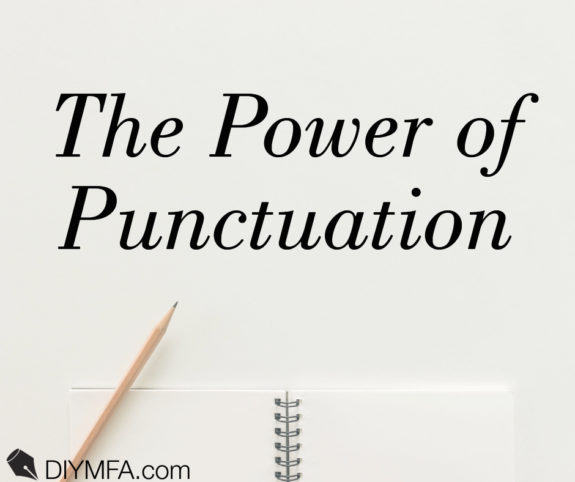Punctuation can feel like a burden, something we either do correctly or not. After all, grammar guides and style books were created for a reason. But in reality, punctuation is a powerful resource to enhance our writing.
Looking in any two grammar guides for rules about punctuation usage, we’ll be sure to find conflicting advice. While there are some commonly agreed upon standards we’ll want to stick to, there is more play available with punctuation than many writers realize. The trick is finding the balance between too much and not enough, between what’s “correct” and our own voice.
First, let’s explore some industry standard uses of common punctuation marks and watch as they transform simple words into meaningful and evocative expressions.
Em Dash
The em dash is so named because it is the width of a capital M. It’s one of my absolute favorite punctuation marks due to its versatility and power. The em dash can set apart and emphasize information. For example:
The editor noticed the mistakes—all 126 of them—and sighed in frustration.
Here, the em dashes set apart and draw attention to the sheer number of mistakes the editor found. By emphasizing this information, the reader gets the idea that 126 mistakes are a lot and they can better feel the editor’s frustration.
The em dash also indicates an abrupt stop. Here’s a simple dialogue exchange:
“But,” she started.
“No,” he said, cutting her off.
Not bad, we get the idea. Now, look at the same exchange with an em dash:
“But—”
“No,” he said.
Much stronger. We are able to cut this down because the em dash gives us a visual indication that her speech was suddenly interrupted. One em dash conveys the same meaning as five other words—that’s the power of punctuation.
Exclamation Mark
Called the “exclamation point” in American English, the appropriateness of this handy mark’s usage has been widely debated throughout literary history. Exclamation marks can convey a variety of things: volume, anger, surprise, excitement, wonder, disappointment, disgust, terror, and so on. When using an exclamation mark, do so for a singular purpose. For example:
“You’re never leaving this house again!” my father shouted.
Here, we are telling the reader that an exclamation mark indicates a loud volume. Later in the story, when we try to convey a different emotion and write something like this…
“I don’t want to go with you!” she whispered.
…our reader is going to be thoroughly confused. Choose one usage for exclamation marks and use them sparingly. I treat them like cuss words—the occasional one may be necessary but use them all the time and they lose their shock value.
Ellipsis
Ellipsis comes from the Greek word elleipein, meaning “leave out.” An ellipsis is the intentional omission of words expected to be understood yet left unspoken. We indicate this with three periods. (Three and only three. Ever. Period.)
In fiction, the ellipsis is used to indicate a trailing off of speech or thought. For example:
If only she had…oh, it didn’t matter now.
Contrary to the em dash, which indicates an abrupt pause, the ellipsis offers a more gradual approach in both meaning and visual representation. Writers may use an ellipsis to evoke hesitation, tension, or suspense. The ellipsis also protects our reader’s delicate sensibilities by offering writers a way to avoid directly mentioning controversial or graphic things.
Okay, I get it. Punctuation is powerful. Now what?
Once we believe in the power of punctuation, we can begin using it to convey our true meaning, tone, and style. But author beware. Overusing punctuation—even when grammatically correct—can be a disservice to our reader. When we toss excessive punctuation and formatting (don’t even get me started on bolded words!) into every line of our manuscript, we rob the reader of their reading autonomy.
On one hand, proper punctuation is absolutely necessary for clarity. On the other hand, punctuation can be used fluidly to enhance the words on the page, not just contain them. How do we marry these ideas into a correctly punctuated manuscript? We use the right mindset, knowledge, and resources when editing our draft.
Punctuate while keeping in mind is easiest for your reader. Educate yourself on how to use punctuation correctly. And use editing software and professional editors as resources to get it all in the right place. Punctuation is a tool, and it can be wielded differently by each writer. Learn the standards and then have fun stretching the boundaries of punctuation usage.
Happy editing!

Jeanette the Writer is an editor, coach, and freelance writer who wants to help others demolish their editing fears and finish their manuscript. As a former scuba instructor turned entrepreneur, Jeanette knows about putting in the hard work to pursue your passions. She has worked with authors, speakers, coaches, and entrepreneurs—empowering them with the right mindset, knowledge, and tools to help them tackle their editing goals. You can learn more about Jeanette by visiting JeanetteTheWriter.com.







